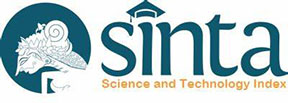IDENTIFIKASI DAN ANTAGONISME JAMUR ENDOFIT TANAMAN TEBU (Saccharum officinarum L.) DALAM MENGHAMBAT Xanthomonas albilineans L. PENYEBAB PENYAKIT VASKULAR BAKTERI
DOI:
https://doi.org/10.32734/jopt.v3i1.2954Keywords:
Sugarcane, Saccharum officinarum, endophytic, fungi, sterilizationAbstract
Identification and antagonism test endophytic fungi of sugarcane (Saccharum officinarum L.) to control bacterial vascular (Xanthomonas albilineans). This research aims to find potential endophytic fungi to against X. albilineans on sugarcane with use method autoclaving and membrane filtration sterilization. The research was conducted at Plant Disease Laboratory, Agroecotechnology Program Study, Faculty of Agriculture, University of Sumatera Utara, Medan from April to December 2014. It was done by using Completely Randomized Design (CRD) Factorial with three factor and three replications. The first factor were endophytic fungi 1, endophytic fungi 2. The second factor were dilution 10-1, 10-2, 10-3 dan 10-4. The three factor sterilization method were autoclaving and membrane filtration. The results showed all the endophytic fungi Aspergillus sp. better use membrane filtration sterilization and Hormiscium sp. better use autoclaving sterilization. Both fungi are potentially as biological agents to control bacterial vascular wilt on sugarcane. The best results obtained on Hormiscium sp.with diameter of inhibiting zone 9,04 mm with use autoclaving sterilization






















